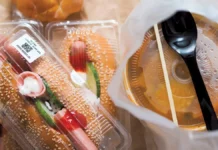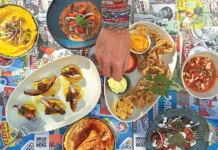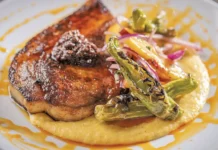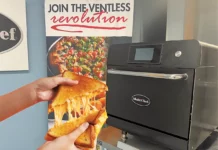
Here are three restaurant truisms that can kill a restaurant’s cash flow:
Truism #1: You can fix any problem in the restaurant simply by throwing money at it.
Here’s an example. When you need more food, what do you do? You order more food.
But what if it doesn’t seem you should need more food? For example, what if your sales aren’t up?
If you have theft in your kitchen, if your cooks are over-portioning ingredients on plates to fill the white space and/or you are over-ordering and throwing away spoiled food, you will need to order more food.
The reality is most restaurants don’t know these things are happening. All they know is they need more food. So, they fix the problem and buy more. They don’t actually find or fix the real problem.
Truism #2: Being on a budget doesn’t mean you’ll have the money to pay your bills.
Your management team is doing great and hitting their numbers, yet you don’t have enough money to make payroll. How is that possible?
Let’s consider a scenario we’ve seen many times. Early in the week, you ran back into your kitchen upset because they ran out of one of your signature dishes and a few other items. You said, “If you 86 another item, I am going to go ballistic!” Your chef or kitchen manager heard you loud and clear, and fixed the problem with a huge food order that wasn’t in the budget. Now you won’t run out of any of your signature dishes. Unfortunately, this takes $3,000 out of your bank account and ties it up as inventory on your shelves, which is now at risk to be wasted, stolen or spoiled.
Ordering too much food takes cash out of your bank account. The last time I looked, you can’t go to the power company with a case of steaks and call it even. Cash is KING and it’s what pays your bills, not profits.
Truism #3: There is only one person on your team who can place a food order.
In many independent restaurants, the chef, kitchen manager or owner are the only ones entrusted to place the food order because they have the needs of the business all wrapped up in their heads. And when they have allowed others to order, it often resulted in way too much product being ordered, so the chef, kitchen manager or owner feels like the responsibility to order must be theirs, falling into the trap of, “If I want the job done right, I just have to do it myself.”
Do any of these sound like familiar scenarios in your restaurant?
If you want to protect your restaurant’s cash flow, run a successful and profitable restaurant where guests come to enjoy a great meal and experience, and where your employees enjoy coming to work, you have to do these three things:
- Stop throwing money at your problems.
- Keep to a budget that puts money in the bank.
- Entrust others to place food orders.
These activities protect your restaurant’s cash flow. How can you give up the ordering process to someone else, make sure they find any problems in your kitchen and fix them, and ensure you have the money in your bank account where it belongs at the same time?
Believe it or not, easily! The secret is the purchase allotment system, which you have to implement and use on a daily basis. It’s a system that changes your business and releases you from doing it all but still having controls in place that allow you to have the final say when there are exceptions.
Here’s how the numbers fit together
Let’s say your food cost target is 22 percent. You forecasted sales to be $7,602.67 for Tuesday, Sept. 1. Of those sales, 80 percent are food sales totaling $6,082.14 (sales mix times forecasted sales). If your kitchen was to execute each order following recipes exactly on Sept. 1, your kitchen should use $1,338.07 in food product (food cost target percent times forecasted food sales). This is referred to as the food allotment.
When you enter your actual food sales on a daily basis, the food allotment adjusts up or down. If your sales were larger than you forecasted, it tells the person placing food orders they need to order more because you were busier than expected. If sales were lower than forecasted, it tells the person placing the order not to order so much because you didn’t use as much food as you anticipated. The beautiful part about this system is it corrects itself every day!
The next step is to enter your food purchases each day. If you order on Monday for a Tuesday delivery and again on Thursday for a Friday delivery, and you have followed the daily steps described earlier, the person in charge of purchasing will simply skip to the order day past the next order to find out what the estimated order is to make sure they replace what has left the shelves, order more to replace what is going to leave the shelves between now and that second order day, taking into consideration how much food you have already purchased.
Before it will work
To make the purchase allotment system work and protect your restaurant’s cash flow, you have to have the following four things in place:
- Use a budget.
- Forecast sales by day of the week.
- Log food and beverage purchases daily.
- Track your sales by category daily.
Once these four things are in place, you need to make one assumption: that your inventory levels will work up and down to an average inventory value target. Basically, if you use $300 in product, you will be able to order $300 in product to get your inventory levels back to where they were before you used that product.























